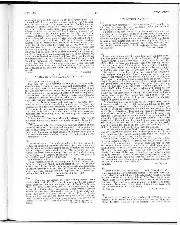
sir
Sir, I suspected the first 70 m.p.h. period was the thin edge of the wedge, the extension confirmed my worst fears, the latest move calls for the most positive violent…
The McLaren M23 has decent claim to the title of the greatest Formula 1 car ever. There are racers with a greater tally of wins than its haul of 16 — the Lotus 72 and the Mercedes W07 Hybrid — and other machines have been much more innovative, but no other F1 car remained so competitive for so long.
Designed by Gordon Coppuck, the M23 claimed victory in its fifth race, courtesy of Denny Hulme at Anderstorp, Sweden, in June 1973, and was still challenging for wins in its dotage five years later. James Hunt took three poles in a row at the start of 1977 in a car he loved, as he began the defence of his world title. The M23 was finally — belatedly even — superseded by the M26 (a car Hunt didn’t love quite so much), but that wasn’t the end of the competition career of the M23 at world championship level. Privateers continued to race the car into 1978, Nelson Piquet contesting three races late in the summer aboard a car run by BS Fabrications.
Hunt wasn’t the only driver to adore the M23. Emerson Fittipaldi, who took Marlboro money to McLaren for the 1973 season and went on to win the title in ’74 aboard the Coppuck design, picked it as his favourite racing car in the pages of Motor Sport. “A strong car, well engineered and reliable,” is what the double world champion said.
McLaren constantly sought to improve the M23 over its five-season lifespan.
“We were always trying to push the development envelope,” says former McLaren mechanic Mark Scott, who joined the team in ’75. “We’d put the car in the windtunnel at MIRA a few times a year, which I’m not sure a lot of other teams did, and we had Alastair Caldwell as team manager. He was into trying different things.”
Those things included the six-speed gearbox, a first in Formula 1, and underfloor skirts. Caldwell also came up with the idea for the pneumatic air-starter, a weight-saving development, during the M23’s life.
There was nothing complex about the M23, adds Scott. It just did everything right. “It was just a simple and, for its time, stiff racing car,” continues Scott. “And Gordon was very much on top of suspension design.”
The career of the M23 was lengthened by teething problems encountered with its successor. Coppuck had designed the M26 around Fittipaldi, before his sudden departure to join the team started by his brother Wilson. Hunt, his replacement, didn’t fit the new honeycomb-chassis machine as it was originally conceived.
“James Hunt took three pole positions in a row in a car that he loved”
Jochen Mass gave the M26 its debut at the German GP in ’76, but McLaren needed a car that was better than the M23 at a time when it was trying to win a championship. The team took the unprecedented step of setting up a dedicated test team to develop the newcomer, which wouldn’t become Hunt’s weapon of choice until the European season began in ’77.
The M23, thanks to its longevity, isn’t rare as F1 cars go. A total of 13 were built plus one Formula 5000 car around the same tub (although this was converted to F1 spec for Emilio de Villota to race and today remains an F1 car), but they aren’t a regular sight in historic events. An M23 didn’t grace FIA Masters Historic F1 last year. That’s probably a result of the its value.
The reasons are easy to understand. It is an iconic and successful racing car that for a long time remained a front-runner. It was also a car which motor racing’s first pop star, James Hunt, was driving when F1 burst into the public’s wider consciousness, at least in the UK, during the balmy summer of ’76 as he battled with Niki Lauda for the world title
Price new n/a
Price now £2-3 million
Engine 3-litre Cosworth DFV
Power 480-520bhp
GP wins 16
Pole positions 14
Championships 2
Verdict One of the greatest racing cars ever built
Not the rarest, but always desirable
The market for classic F1 cars is difficult to judge; many sales are made behind closed doors, making it difficult to track values. Interest in the sector has increased since 2004 with the introduction of the Masters F1 series which celebrates the Cosworth DFV-powered cars built from 1966 to ’85.
The McLaren M23 fits squarely into this camp. The M23 was replaced by the M26 in 1976 and the public sale of the car used by James Hunt during the 1977 season is perhaps the best guide for the market. It sold for $1.2m (£735,000) – at the bottom of the $1.2m – $1.8m guide price in November 2013.
This was the last car in which Hunt recorded a career win, it is a different model and the timing of the sale came just after the release of the Rush film, which put 70s McLarens firmly in public eye.
The existence of the Masters series creates desirability, plus there’s also good parts availability for the Cosworth DFV, making it relatively practical to use. ‘Relatively’ is the keyword, as nothing comes cheap in historic racing, especially in F1 guise, so expect a £15,000 rebuild every 1200 miles (12 – 36 months).
Target deal
Original example, £1.5m to £3m, depending on provenance.
Robert Johnson, Classic and Sports Finance
